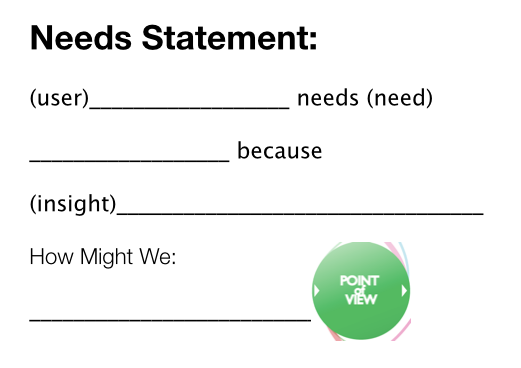"Redesign is a professional development experience." Begins Martin. We actually began the session with an 8 minute design activity. First, we brainstormed how to capture our conference learning. Then we designed professional development with unlimited access and budget.
"Redesign is a Community Experience." It's not about a small group making decisions but about an entire community coming together to determine what's best for the school
"Redesign isn't about a single space." At Francis Parker, they started with 1 computer lab. However, they realized that it's about the process and not the space itself.
"Learning Spaces aren't just about physical spaces." Martin says that it can be the library, classroom, hallways, labs as well as the digital spaces. Have to be able to trans-navigate these spaces for the learning to exponentially grow.
"Don't create Maker Spaces, create Maker Schools."
Space shouldn't be about separation but about inclusion. We have "ghettoized" computer labs where they are single spaces that teachers and classes go to. Instead, of making better computer labs, Martin challenges to make better computer teachers. If we make individual spaces, then they become fads vs authentic learning spaces.
Ultimately, the question is about school culture.
Culture eats strategy for breakfast. - Peter Drucker
Great ideas can be ruined if we don't anticipate the impact that it can have on school culture. If a school doesn't know who they are, then can't put something together that will work. "Many an administration has been felled by a lack of understanding of their human resources." Warns Martin. We have to start with the WHY.
TIDES Framework
Martin's school is using his to guide their motion forward.
- Technology
- Innovation
- Design Thinking
- Entrepreneurship (for)
- Society
This isn't a program or a plan, this is a set of focal points to build around thinking. Within this framework, Martin's school is redesigning four focal points: Space, Curriculum, Staffing, and Professional Development. These are at the heart of their program with the idea that they will use the design thinking process to build these things together as a community. In the last 10 years, 60% of the staff is now new. This means that no one has authority and they are in a great situation to do something new.
Space
They first started looking at the computer lab and library. The former was an enormous waste of space with expensive computers that were more than what students needed, and the latter was configured in a way that was uninviting to learning. Essentially, it created a space that no one wanted to enter.

To begin, they asked What might be possible? They looked the library and asked, "what could we do with that?" Instead of tasking the new librarian and a few others with the redesign, then it didn't make anyone a stakeholder. Instead, it created a privileged group rather than a community. For inspiration, they looked to the Stanford Design School. In particular, they liked the iterative process.
When they redesigned the computer lab, they created a space that could go from orderly to messy, from individualized to collaborative, completely mobile, and utterly flexible.
The keys to redesigning a space are Adaptability and Agility. Ultimately, the less a space is defined by what is in it, the better. The space is about learning and not about the objects inside.
Steps to Redesign
They used the process from the Stanford D-School to guide their thinking.
Step 1 - Learning
Teachers used Social Media, School Visits, Non-School Visits, and Google Hangouts to explore what is possible. One of the great places that Martin visited was Nuvu Studio in Massachusetts. It's an old loft where students come in for 3-6 week sessions to work on a project from 9-3. Other great spaces are 1871 in Chicago (incredible co-working spaces) as well as Next-Door Cafe (a chain of cafes with unique work spaces). They also had to use a combination of observations and interviews to determine the needs of spaces.
- DON'T ASK - what should this space look like?
- DO ASK - tell me a story about how you have used this space in the past, what did it feel like when______, what's your favorite room in the school and why?
A challenge is that teachers and students don't know what they don't know. It's about uncovering needs and wants rather than perceptions.
Step 2 - Needs Statement
Based upon interviews and observations, come up with a statement. From there, it's possible to identify a Point of View. The statement then needs to be do-able.

Culture can be defined by momentum. These questions can help to build the forward momentum necessary for change.
Step 3 - Ideation
There are no bad ideas and it's about quantity over quality. This stage is about good ideas sparking more ideas. The "Yes And" concept will lead to innovation while the "it won't work because" will stifle.
Considering Constraints
Martin recommends considering constraints. Boundaries should promote creativity and not stifle innovation. Instead of becoming limitations, they can open up possibilities.
There are certain non-negotiables, so those should be removed early. The key is to avoid "building a faster horse" rather than a new mode of transportation. Another challenge is to avoid "solution/constraint creep." In other words, don't let a single solution allow you to stop trying to find even more solutions. Redesign is about having time. The goal is to propose ideas, encourage ideation, and celebrate value beyond space needs.
Additional Resources from Martin
- Design Thinking Challenges (Stanford)
- Design Thinking for Educators (IDEO)
- Design Thinking Resources (Edutopia)
- Design Thinking in Schools


